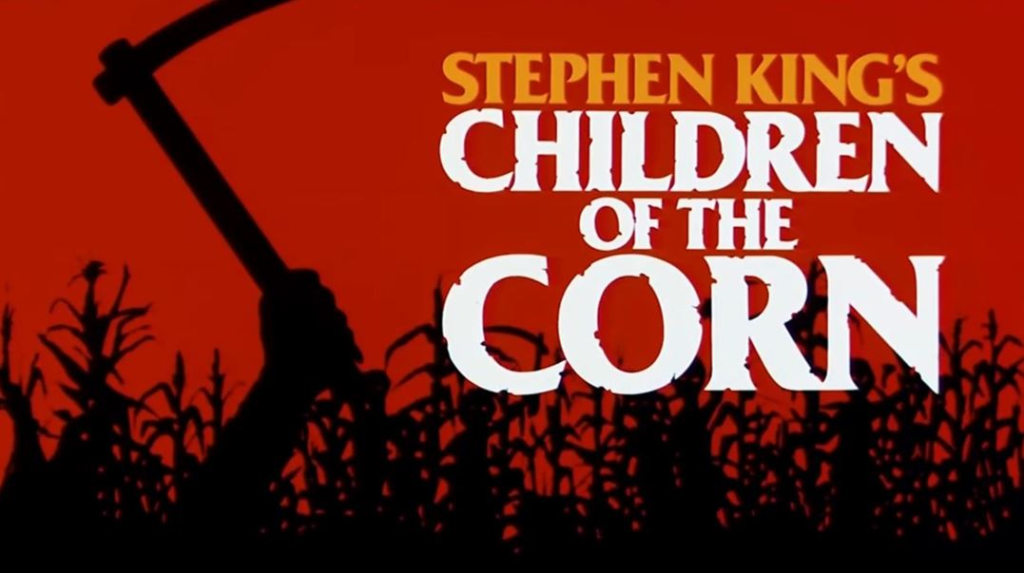
“Children of the Corn,” released in 1984, is a supernatural horror film directed by Fritz Kiersch. Based on Stephen King’s chilling short story of the same name, which was published in 1977, the film captures the essence of rural terror while delving into themes of faith, innocence, and the darkness that can lurk beneath the surface of small-town life. With a talented cast including Peter Horton, Linda Hamilton, John Franklin, and Courtney Gains, the film has carved out a notable place in the horror genre and has since spawned numerous sequels and adaptations.
The narrative centers around a young couple, Burt and Vicky, portrayed by Horton and Hamilton, who are traveling through rural Nebraska. Their journey takes a sinister turn when they accidentally drive through a small town named Gatlin, where they discover a chilling cult of children who worship a malevolent entity known as “He Who Walks Behind the Rows.” This entity demands the sacrifice of adults, leading the children to commit heinous acts against anyone they deem a threat to their beliefs.
From the outset, the film establishes a foreboding atmosphere, heightened by its rural setting. The seemingly idyllic cornfields of Nebraska become a backdrop for terror as the story unfolds. Kiersch’s direction effectively builds tension, using the vast, empty landscapes to create a sense of isolation and entrapment. The cornfields, which initially appear innocent, soon transform into a maze of horror, symbolizing the loss of innocence and the dangers of blind faith.
The character of Isaac, played by John Franklin, serves as a central figure in the film. His portrayal of the charismatic yet sinister leader of the children showcases the terrifying blend of innocence and manipulation. Isaac’s fervent beliefs and his ability to sway the other children into committing acts of violence reflect the theme of how easily faith can be twisted into fanaticism. This exploration of cult dynamics is a chilling reminder of the power of belief and the potential for evil when children are led astray.
Linda Hamilton’s character, Vicky, adds emotional depth to the story. As the narrative unfolds, she transitions from a supportive partner to a determined individual fighting for survival. Her character’s evolution underscores the film’s exploration of resilience in the face of overwhelming fear. Burt, played by Peter Horton, serves as the pragmatic voice of reason, often clashing with the zealous children and struggling to protect Vicky from their escalating violence.

The film’s use of suspenseful music and eerie sound design further enhances its unsettling atmosphere. The score, composed by Jonathan Elias, effectively builds tension, particularly during key moments of confrontation and revelation. The chilling chants of the children, coupled with the ominous sounds of the cornfields, create an immersive experience that heightens the sense of dread throughout the film.

“Children of the Corn” also poses significant questions about morality, belief, and the consequences of extremism. The children’s drastic actions in the name of faith serve as a commentary on the dangers of blind allegiance to ideology, especially when it is rooted in fear and manipulation. The film explores the fragility of innocence and how easily it can be corrupted by an insidious influence.
The cinematography plays a crucial role in shaping the film’s tone. The contrasting visuals of the sun-drenched cornfields and the shadowy interiors of the town create a dissonance that mirrors the characters’ internal struggles. As the couple navigates their perilous situation, the cornfields become a character in their own right, representing both a refuge and a prison.

Despite its release over three decades ago, “Children of the Corn” remains relevant in discussions about faith and extremism. Its portrayal of a community consumed by a dangerous belief system resonates with contemporary issues, highlighting the need for critical thinking and compassion in the face of fervent ideologies.

In conclusion, “Children of the Corn” stands as a noteworthy entry in the horror genre, skillfully blending supernatural elements with a profound exploration of human nature. Through its compelling characters, haunting visuals, and thought-provoking themes, the film leaves a lasting impression on its audience. As viewers are drawn into the chilling world of Gatlin and its eerie cornfields, they are reminded of the dark potential that exists when innocence is overshadowed by fear and fanaticism. The film not only entertains but also serves as a cautionary tale about the dangers of unquestioned belief and the loss of humanity in the pursuit of power.